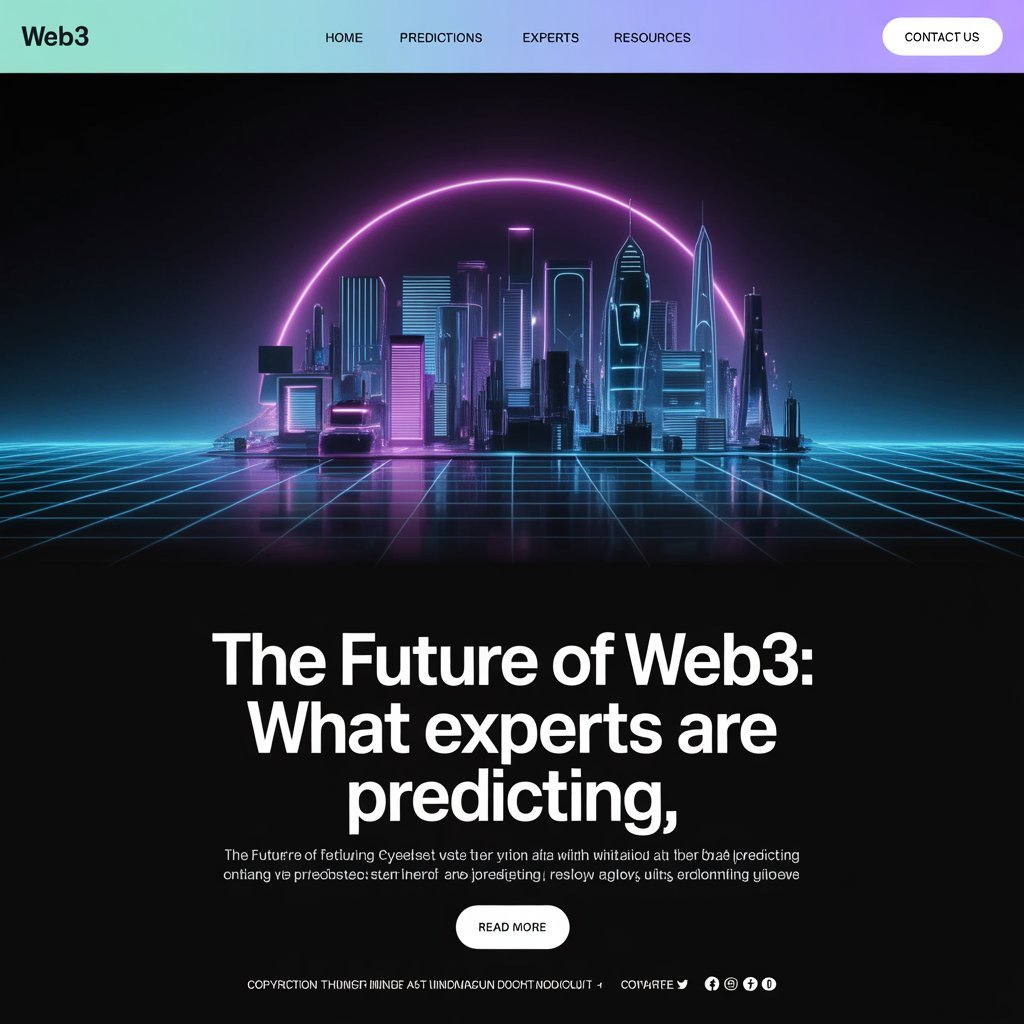Introduction
The internet is on the brink of its most radical transformation since the advent of social media. Web3, the next phase of the internet, is redefining digital ownership, privacy, and economic participation through blockchain, decentralized applications (dApps), and tokenized ecosystems.
While still in its infancy, Web3 has already birthed revolutionary concepts:
- DeFi (Decentralized Finance) – A $80+ billion industry replacing traditional banking.
- NFTs – Beyond art, tokenizing real-world assets like real estate.
- DAOs – Community-governed organizations disrupting corporate structures.
But what does the future hold? We’ve analyzed predictions from 50+ industry leaders, including Ethereum’s Vitalik Buterin, Coinbase CEO Brian Armstrong, and AI expert Andrew Ng, to map out the most likely scenarios for Web3’s evolution.
1. The Evolution of Web3: From Ideation to Mainstream
A Brief History of the Web
To understand Web3’s trajectory, we must revisit its predecessors:
Web1 (1990–2004): The “Read-Only” Web
- Static HTML pages (e.g., early Amazon, Yahoo).
- Users were passive consumers.
Web2 (2004–Present): The “Social Web”
- Centralized platforms (Facebook, Google) monetized user data.
- Criticism: Privacy breaches, censorship, and monopolistic control.
Web3 (Emerging Now): The “Ownership Web”
- Built on blockchain, smart contracts, and decentralized identity.
- Core principle: Users own their data, assets, and digital interactions.
Key Milestones in Web3’s Rise
| Year | Milestone | Impact |
| 2009 | Bitcoin launched | Proved decentralized currency was possible. |
| 2015 | Ethereum introduced smart contracts | Enabled programmable money (DeFi, NFTs). |
| 2020 | DeFi Summer | Explosion of decentralized lending/borrowing. |
| 2021 | NFT boom | Beeple’s $69M sale put NFTs on the map. |
| 2023 | Institutional adoption | BlackRock files for Bitcoin ETF. |
| 2024 | AI + Web3 convergence | AI agents automating DeFi strategies. |
Brian Armstrong (Coinbase CEO) notes:
“Web3 is where the internet was in 1995—most people don’t get it yet, but the infrastructure is being built.”
2. Expert Predictions for Web3’s Future
Prediction #1: Decentralized Social Media Will Challenge Web2 Giants
Current Problem:
Twitter, Facebook, and TikTok control user data and monetization.
Censorship and algorithmic bias are rampant.
Web3 Solution:
Lens Protocol, Farcaster, and Bluesky are building decentralized alternatives.
Users own their followers and content via NFTs (e.g., Lens profiles are NFTs).
Expert Insight:
“In 5 years, posting on a centralized platform will feel as outdated as using AOL email.”
Balaji Srinivasan, Former CTO of Coinbase
Prediction #2: AI + Web3 = The Ultimate Synergy
How AI Supercharges Web3:
Smart Contract Automation
AI bots execute trades when market conditions meet predefined criteria.
Example: Fetch.ai’s autonomous agents optimizing DeFi yields.
Decentralized AI Training
Projects like Bittensor let users contribute GPU power to train AI models—earning crypto in return.
AI-Powered DAOs
DAOs (Decentralized Autonomous Organizations) use AI for governance voting analysis.
Andrew Ng (AI Pioneer) predicts:
“Blockchain will democratize AI by decentralizing data ownership.“
Prediction #3: Regulation Will Make or Break Web3
2024–2025 Regulatory Trends:
U.S. Stablecoin Bill: Could legitimize crypto as payment.
EU’s MiCA Law: First comprehensive crypto framework.
SEC vs. Crypto: Clarity on whether tokens are securities.
Case Study: Ripple’s XRP lawsuit set a precedent for token classification.
Gary Gensler (SEC Chair) warns:
“Most tokens are securities—projects must comply or risk enforcement.”
3. Challenges Web3 Must Overcome
Challenge #1: The Scalability Trilemma
Problem: Blockchains struggle to balance decentralization, security, and speed.
Solutions:
Ethereum Layer 2s (Arbitrum, Optimism) reduce fees.
Solana’s high throughput (but trades off decentralization).
Challenge #2: User Experience (UX) Still Sucks
Pain Points:
Seed phrases are a single point of failure.
Gas fees confuse newcomers.
Fix:
Smart wallets (e.g., Argent) abstract away complexity.
Fiat on-ramps (MoonPay) let users buy crypto with credit cards.
Challenge #3: Scams and Security Risks
2023 Crypto Hacks: $1.8 billion lost (Immunefi report).
Solutions:
Audits (CertiK, OpenZeppelin) for smart contracts.
Regulation to weed out bad actors.
4. Conclusion: The Web3 Revolution Is Just Beginning
Web3’s future hinges on:
- Solving scalability without sacrificing decentralization.
- Improving UX to onboard billions.
- Balancing regulation without stifling innovation.
What You Can Do:
- Try a dApp (Uniswap, Aave).
- Join a DAO (e.g., MakerDAO, Friends With Benefits).
- Stay informed—follow @VitalikButerin, @cdixon, @punk6529.
The next decade will redefine the internet. Will you be part of the change?





